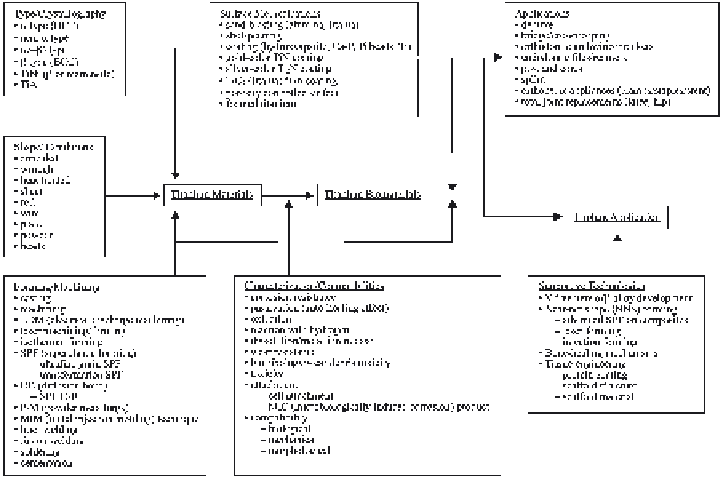Biomedical Engineering Reference
In-Depth Information
Figure 5.1.
Interacting map of various disciplines involved in titanium materials.
Why do titanium and its alloys show such good biocompatibility compared
with other alloys? The answer to this question is generally that titanium is passive
in aqueous solutions, and the passive fi lm that forms on titanium is stable, even
in a biological system including chemical and mechanical environments. Such an
interpretation is true in many cases. However, the presence of the passive fi lm is
only part of the answer, considering the complex interfacial phenomena found
between titanium and a biological system, in both biological and biomechanical
environments.
Figure 5.1 [Oshida, 2007a] demonstrates the uniqueness of titanium materi-
als. Along with stainless steels, titanium materials are only two types of materials
which are widely and equally used in both engineering and medical/dental
fi elds. From this fi gure, several important and interesting points can be derived;
there are:
1. more than three different matrix phases available, depending on amount
of alloying elements as
α
- stabilizer or
β
- stabilizer;
2. a variety of primary products available;
3. all kinds of forming technology applicable;
4. if required characteristics and compatibilities are satisfi ed, titanium mate-
rials can be considered as titanium biomaterials for various medical/dental
applications, and furthermore;
5. with supportive technologies, successful implants can be fabricated.

Search WWH ::

Custom Search